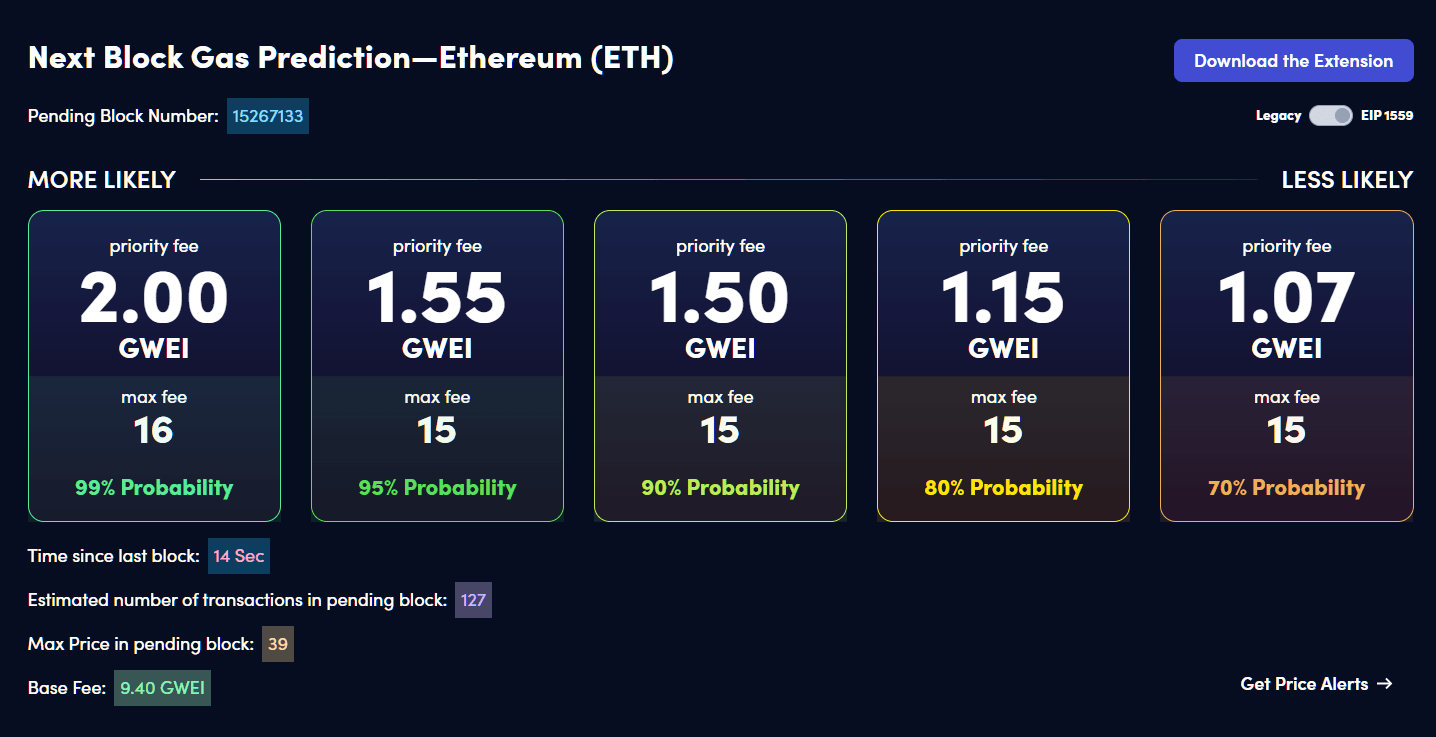NFT Gas Fees And How Gasless Transactions Are Possible


What are NFT gas fees?
How much are gas fees for NFTs?
How to calculate NFT gas fees
More on gas limit
Gas fees for minting NFT
Getting around gas fees
Gasless transactions to the rescue
Doing our part to make transactions gasless
Conclusion
For newcomers in the NFT space, gas fees can be hard to wrap your head around. Like "why are gas fees usually calculated in Gwei?" "Why does one blockchain network have significantly more expensive gas fees than others?"
Those are all common questions that face the minds of newcomers, and in this article today, we’ll help you understand them once and for all.
What are NFT gas fees?
Gas fees, also called transaction fees, are the fees you pay to execute any transactions on the blockchain. It exists on all blockchain networks, but it’s mostly the Ethereum blockchain – the home of DeFi (decentralized finance), comprising ~65% of the DeFi market – that is known for high gas fees.
To complete NFT transactions on any blockchain – say the purchase of an NFT – you will need to pay a fee to validate that transaction on the network, and it might take some time to do so. This fee can be regarded as a kind of ‘tip’ to compensate miners/validators to verify blockchain transactions. A typical transaction on the Ethereum network, for example, typically takes between 15 seconds to as long as five minutes to process, depending on the network activity at the time.
The reason for this wide variance in transaction time is that there’s a hard limit on how many transactions can be done per second on the blockchain network, and when there are too many transactions occurring at the same time on the network, miners/validators will have to prioritize what transactions need to be done first – and this leads to higher NFT gas fees and/or longer transaction time.
How much are gas fees for NFTs?
NFT Gas prices fluctuate. And like most things, the factors determining the fluctuations are supply and demand which – especially in the NFT space – can be confusing. Too large a demand (the people requesting transaction validations) and too few a supply (the number of miners that are capable of validating said transactions) can cause network congestion that drives up gas fees.

Additionally, NFT gas fees chart can change based on how fast you want the transaction to go. Most crypto/ NFT wallets including MetaMask, CoinBase, and WalletConnect have a Speed Up transactions (or similarly named) feature showing how fast you can speed this transaction up, along with the priority fee required for it.
It is basically a fee that you’ll pay to miners and/or validators as a kind of tip to incentivize them to prioritize your transaction; and the more priority fee you pay, the faster your transaction will be.

On rare occasions, we’ve seen this transaction fee go upwards of $45,000 for a $5,800 NFT, which sparked several debates about how only the wealthiest speculators can participate in this emerging market.
How to calculate NFT gas fees
Since EIP-1559 aka the London upgrade, calculating gas fees has become a lot easier. You would only need to know the base current NFT gas fees, the priority fee, and the units of gas used. The equation is as follows:
Gas fees = gas limit x (base fee + priority fee)
- Gas limit: the maximum amount of gas units (in gwei) that you agree to pay
- Base fee: the fee decided by the blockchain network
- Priority fee: the tip to incentivize miners/validators to prioritize your transaction over others
Most blockchain networks use Gwei for gas fee measurements, which you can think of simpler terms as coins to ETH dollars. To best show you how gas fees are calculated, we’ll use the current NFT gas fees (at the time of writing this article):

From the above pic, we can see that the current base fee of the network is 9.40 gwei, which is a relatively low fee indicating that the network is currently at its low capacity. With this base fee, we can work with the priority fees as shown above and come up with our gas fees, like so:

It should look pretty self-explanatory how gas fees are calculated post-London-upgrade from the calculation above. The only thing you would need to pay special attention to is that converting from gwei to USD should always be based on the current Ethereum (ETH) price.
With the Ethereum NFT gas fees of 239,400 gwei from the calculation, for example, we were able to convert it to USD by multiplying it with an ETH price of $1,616.05 (at the time of writing), which results in a 0.38 USD gas fee.
More on gas limit
To keep fluctuating gas fees in check, most crypto wallets nowadays – such as Metamask – provide a way to manually set the gas limit, which refers to the maximum amount of gas (or energy) that you're willing to spend on a particular transaction. A standard transaction on the Ethereum network, for example, typically takes 21,000 gas for processing. This is the same for other EVM-compatible blockchain networks such as Harmony and Polygon where standard transactions also cost 21,000 gas.
Note that gas limit does not dictate max fee – which is the final fee you want to pay. Depending on network congestion, you can set the gas limit to a standard value like 21,000 gas and still face high gas fees.
Gas fees for minting NFT
So why do we need to pay gas fees to mint NFT then? The answer lies in the very definition of minting, which means writing/publishing a token on the blockchain, and as we have discussed before, every transaction on the blockchain – even the process of writing on it – requires gas fees.
For a quick reference on the gas fees needed for an NFT transaction, do refer to the table below from cryptoneur.xyz:

From the snapshot above, you can see that gas fees (at the time of taking the snapshot) are pretty minimal in all chains, costing at the most $0.1720 to mint an NFT on the Ethereum network.
It’s also worth it to note that sellers are not always the ones who mint NFTs. NFTs can be minted at the moment of creation (as is the case with traditional minting) or at the moment of purchase (lazy minting), and that is why you should always check which minting method your NFT marketplace and/or NFT store employs before making the purchase.

Getting around gas fees
Now that you know how much gas fees for NFT typically cost, as well as how to calculate them, maybe it’s time to figure out how to navigate around this. There are really no hidden tricks behind this, as there are only so many ways you can try to make gas fees a little bit less costly:
1. Choose the right timing
Checking when to do your transactions is, still, the easiest way to get around high gas fees NFT. On the Ethereum network, for example, gas prices can be as high as 40 gwei at its peak period and as low as 8.1 gwei (for standard transactions costing 21,000 gas) – and this is all on the same day.

For the best results, you might want to plan ahead when you want to mint your NFTs. Historically, gas fees tend to be at the highest during midnight and weekdays, and drop lower when it’s midday.
2. Go with slower transactions
If time is no concern for you, maybe you’ll want to lower your priority fee aka miner tip, as you can save a significant amount this way.

However, keep in mind that you probably don’t want your transactions to go too slow, as the time estimations might be a lot longer than it actually is.

3. Set a max base fee
Despite base fees being decided by the network, you can still manually set a max base fee that you want to pay for your transactions. This will especially come in useful handy when the network is congested which leads to unpredictable base fees.

Gasless transactions to the rescue
You know what they say, if there’s a will, there’s a way. The current NFT gas fees, while necessary for the longevity and security of the blockchain network, still serve as a major hurdle in the way of making NFTs mainstream, as it forces new users to purchase the chain-native token.
Because of this, there currently exist gasless solutions on the market that, despite being a little bit unorthodox, help users complete transactions without paying a single dime of gas fees. Most of them usually work in the same way – they leverage the meta transactions concept to allow a third party to pay gas fees on behalf of the user.

Gasless transactions come in to solve one of the biggest challenges there are for the NFT industry: making the buying experience seamless, which ultimately rakes in more sales and revenue. With gasless transactions, gas fees are no longer present at every interaction, and thus it’s only natural that many big NFT marketplaces (such as Mintable) currently employ gasless transactions, and the list certainly won’t be stopping there.
Doing our part to make transactions gasless
As a platform dedicated to providing NFT entrepreneurs with the best way to create their own branded NFT marketplaces, NFTify is doing everything in our power to make mass adoption of NFTs a reality for everyone out there – and this means adopting available gasless solutions at hand to make the purchasing experience as smooth as possible for NFT buyers.
NFTify users can buy NFT no gas fees by choosing to go gasless with our Biconomy integration, and we’re proud to be one of the very first NFT marketplace builder solutions to empower NFT creators with this feature:

The integration process can be quite complicated for non-tech-savvy store owners, but with a little bit of time and effort, you should be able to get NFT no gas fees a real thing on your NFT website. The whole process should consist of steps similarly to these:
- Step 1: Register a dashboard on Biconomy
- Step 2: Register a DApp on your dashboard
- Step 3: Add smart contracts into your DApp
- Step 4: Add APIs for each smart contract to enable meta transaction
- Step 5: Input API key into Biconomy Integration section on Store Website

For more details, do refer to our tutorial.
Conclusion
As confusing and troublesome as NFT gas fees can be, it’s still a core part of the blockchain that we can’t do without. However, with the NFT space becoming more and more like the eCommerce world, we can only hope that gasless solutions will be mainstream soon to make the purchasing experience a little bit less painful for the typical user.
And If you’re just getting started, understanding gas fees – where and when it occurs – can be vital for your success, and hopefully with the information provided in the article, you can find yourself having an easier time navigating through the NFT space.

with NFTify today
matter of hours, without a single line of
code or any upfront cost.
